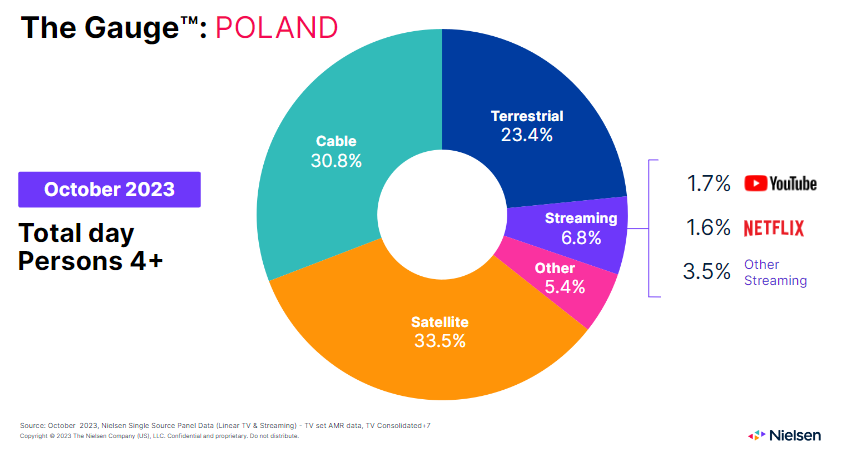October, with its autumn aura and shorter days, also brings changes in the habits of watching video content on TV screens. Compared with the previous month, viewers spent on average 22 minutes more per day in front of TV screens.
Polish viewers spent more time watching video content on their TVs in October: traditional TV viewing increased by 10% and streaming increased 14% compared with September 2023.
On traditional television, viewers’ were attracted to information content, which was related to the election campaign and its culmination in the form of the parliamentary elections in Poland, which took place on October 15. News channels recorded a 34% increase in viewership compared with September.
In streaming, the viewership of both Netflix and YouTube, the main online platforms watched on TV screens, increased from September by 17% and 12%, respectively. Along with a bigger audience for platforms like Canal+Online, Disney+ and Player, the share of streaming increased 0.2%, to account for 6.8% of TV in October.

About The Gauge™
The Gauge™ was created to provide the media industry with a monthly analysis of television usage across key television delivery platforms. Nielsen published its first edition of The Gauge™ in the U.S. in May 2021.
About The Gauge™ Methodology
The data comes from Nielsen’s single-source panel consisting of 3,500 households and almost 9,700 panelists. The Gauge™: Poland is based on monthly AMR (Average Minute Rating) audience share data. The data is presented for people over 4 years old, broken down into cable, satellite, terrestrial television (both linear and shifted in time up to 7 days), and viewership from streaming (live streaming viewership of TV stations on OTT platforms is classified as streaming viewership). The “Other” category includes views of unrecognized content.
Nielsen Poland created this iteration of The Gauge™ using methodologies conceptually similar to those in the U.S. version. Methodological differences should be considered when making any comparisons.
